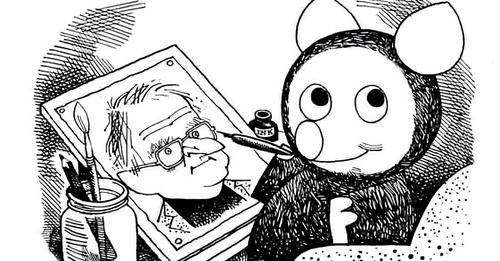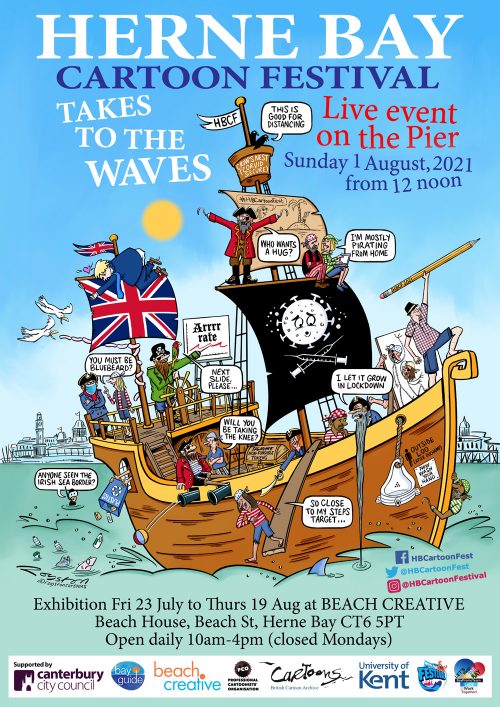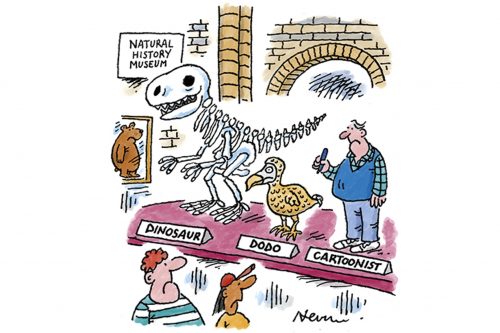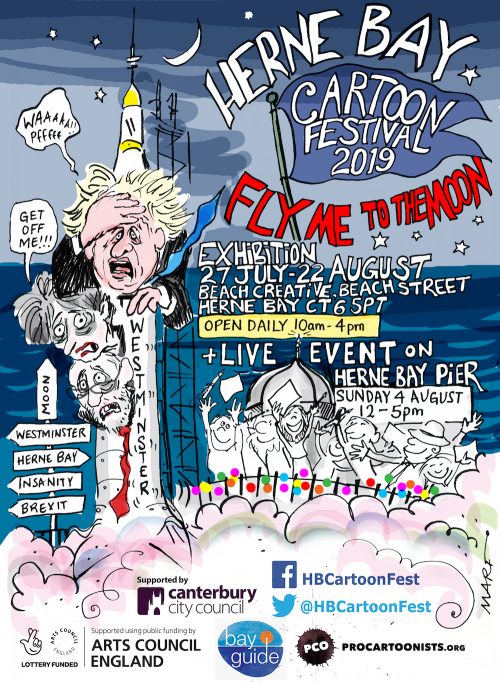Wally Fawkes: an appreciation

Flook illustration Rupert Besley writes: Few people rise to the top of their profession. Very few are still in that position half a century on. And fewer still accomplish that in two careers at once. But this was the achievement of Wally Fawkes, loved and admired equally as jazz clarinettist and as the cartoonist […]
Herne Bay Cartoon Festival Sets Sail Again

Herne Bay Cartoon Festival is back this year. We weren’t able to gather in 2020 for obvious reasons, and when we meet again this summer we will sadly be missing some friends including festival co-organiser Steve Coombes who passed away last December. His tireless enthusiasm and joi de vivre will be missed so much at the […]
Why does no one want to be a cartoonist any more? The lack of new blood doesn’t bode well for the industry’s future

Written by Nick Newman for (and courtesy of) The Spectator with bonus cartoon content. ‘Nightmare!’ is how The Spectator’s cartoon editor Michael Heath has been describing cartooning for at least 30 years, but it’s truer now than ever. Eighty years ago, cartoonists were so celebrated that waxworks of Low, Strube and Poy were displayed in […]
Herne Bay Cartoon Festival 2019 launch countdown

This year’s poster was created for the festival by © Marf. Sue Austen (Festival Organiser) writes: The Herne Bay Cartoon Festival has landed for another year. This is the seventh consecutive festival in the lovely Kent seaside town. The theme for this year is Fly Me to the Moon referencing the fiftieth anniversary of the […]
Hector Breeze RIP
Cartoon from Private Eye – A Cartoon History Rupert Besley writes: The sad news of the passing of Hector Breeze not long after celebrating his 90th birthday, has, unsurprisingly, brought in a flood of tributes from fellow cartoonists, all recognising the greatness of the man along with the warmth, charm and wit of his cartoons. […]
John Jensen 1930-2018
John with a ‘selfie’ which he did for an exhibition at the cartoon archive, Kent University. Photo © Pat Jensen Sadly, it has been reported that John Jensen has passed away at the sprightly age of 88. John was a well respected and fondly thought of member of the cartoon community. He was a supreme and very versatile draughtsman. John […]
Herne Bay Cartoon Festival approaches
With the scorching hot weather we’re having, it’s a good time to think about planning a trip to the seaside. And Herne Bay in Kent is just the place to go. The third Herne Bay Cartoon Festival begins later this month with an exhibition called Lines in the Sand opening at the Beach Creative gallery […]
Tales from Herne Bay
Photographer Kasia Kowalska writes: It was 30 years ago that Ralph Steadmancame to give a talk on cartoon drawing and political satire at The University of Kent. At that time the British Cartoon Archive was still a fledgling. After the talk, Ralph gave a practical presentation on political caricatures by drawing members of the audience. A young student Karol Steele was […]
Cartoonists at the Olympics
The exhibition Cartoonists at the Olympics, featuring work from the British Cartoon Archive selected by community sporting groups, opens this weekend. It features Olympics cartoons from years gone by, including this 1948 Daily Mail cartoon about the Games in London that year by Ronald Niebour, who drew as NEB. On the evidence of the Diamond […]
